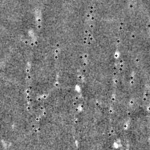Our research in neural engineering advances the fundamentals and applications of electrical stimulation of the nervous system for restoration of function. Applications are wide-ranging and include restoration of bladder function, treatment of movement disorders with deep brain stimulation, electrical stimulation for treatment of pain, vagus nerve stimulation for regulation of organ function, and non-invasive brain stimulation. Activities include design and testing of electrodes and methods for electrical stimulation, development and application of computational approaches to study neural stimulation, and physiological and translational studies of neural control. Our activities span a range of approaches from computational modeling of single cells and interconnected networks, to preclinical in vivo studies, through translation to clinical feasibility studies in humans. We collaborate closely with physicians from gynecology and urology on our bladder control work, physicians from neurosurgery and neurology on our DBS work, and physicians from neurosurgery on our SCS work.
Current research projects include:
- Deep Brain Stimulation (DBS)
We conduct computational, experimental, and clinical studies to understand mechanisms of action and advance technology. Current studies include optogenetic dissection of the neural elements that mediate the effects of DBS, novel temporal pattern of stimulation to improve the efficiency and efficacy of DBS, and development and clinical deployment of novel approaches to closed-loop control ot brain stimulation.
- Restoration of Bladder and Bowel Function
We conduct computational, experimental, and clinical studies of recording and stimulation for control of bladder and bowel function. Current studies include peripheral sensory nerve stimulation to enhance bladder emptying in urinary retention, spinal cord stimulation for restoration of continence and emptying following spinal cord injury, and sacral nerve stimulation for regulation of colonic motility.
Image
Calcium imaging video from the mouse myenteric plexus collected by Heredia, Gould, & Smith1. The motion shown here is uncorrected, physiological contractions in the gut, and our algorithm uses piece-wise rigid registration with pathfinding to track cells as they move across the field of view. Read more about our work or find the code in our repositories.
Image provided by post doc Bradley Barth.
- Spinal Cord Stimulation (SCS) For Treatment of Chronic Pain
We conduct computational and experimental studies to understand mechanisms of action and develop novel approaches. Current studies include understanding the dynamic responses of stimulated neurons to persistent stimulation and mechanisms of pain relief in diabetic painful neuropathy.
Image
Faxitron is a small animal x-ray cabinet that allows researchers to verify electrode locations after implant. This resource is available through Duke's division of laboratory animal resources (DLAR).
This image shows electrodes implanted on the spinal cord of a rat for a chronic behavioral study, image provided by post doc Katherine Lambert.
- Vagus Nerve Stimulation (VNS)
We conduct computational, experimental, and clinical studies to understand and control the effects of autonomic nerve stimulation. Current projects include modeling and measurement of the complement of nerve fibers that are stimulated across electrode designs and stimulation parameters, and the link of nerve fiber activation to physiological responses.
- Intracortical Microstimulation (ICMS)
We conduct computational studies to understand and control the effects of intracortical microstimulation on different neural elements. Current projects include quantifying the temporal and spatial responses to stimulation and developing novel approaches to current steering to more faithfully reproduce natural patterns of cortical activity.
- Electrical Block of Neural Conduction
We conduct computational and experimental studies to advance the use of electrical signals to block neural activity. Current projects include efforts to enhance the efficiency and selectivity of neural block through design of novel electrode geometries and waveforms.
